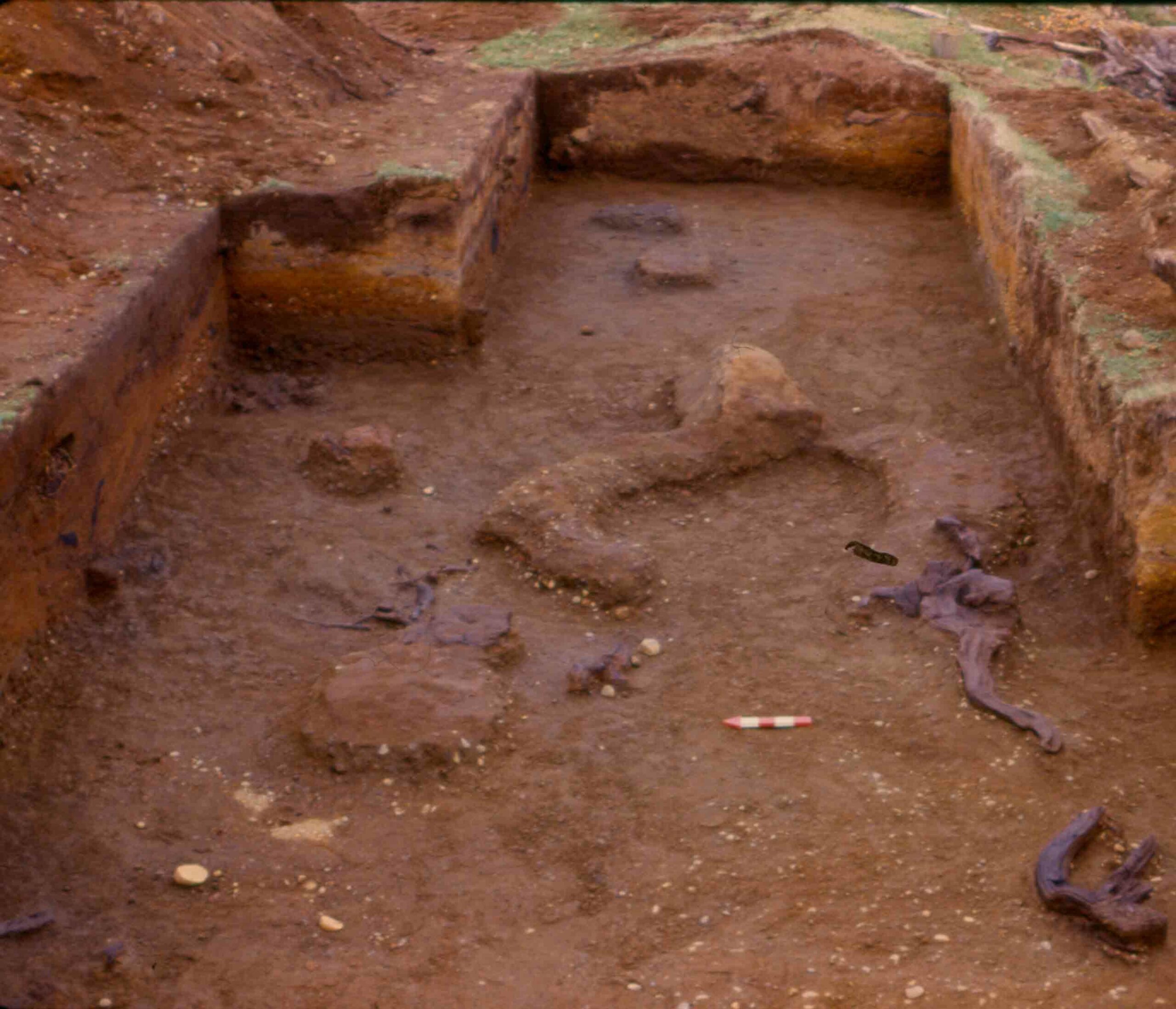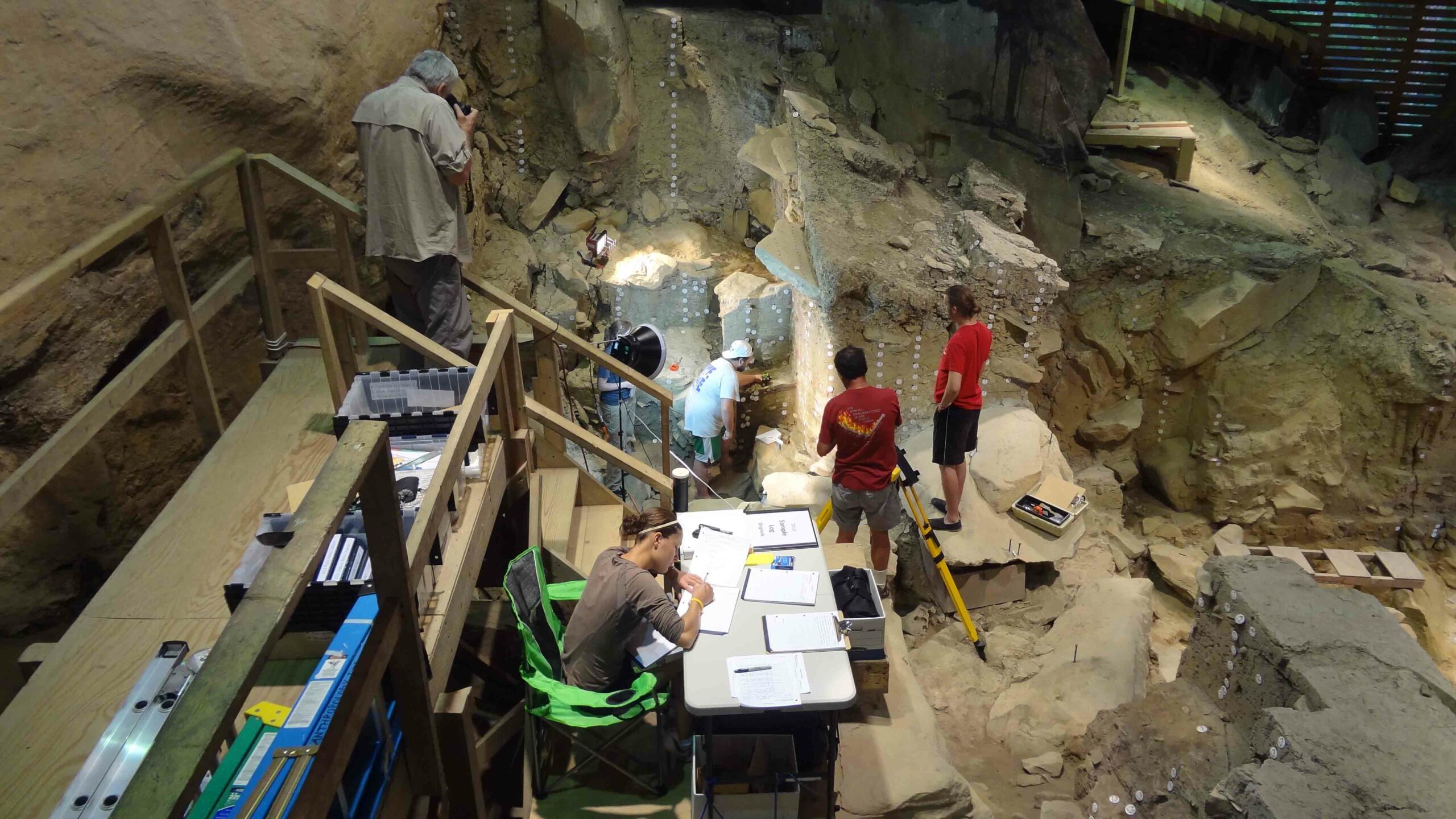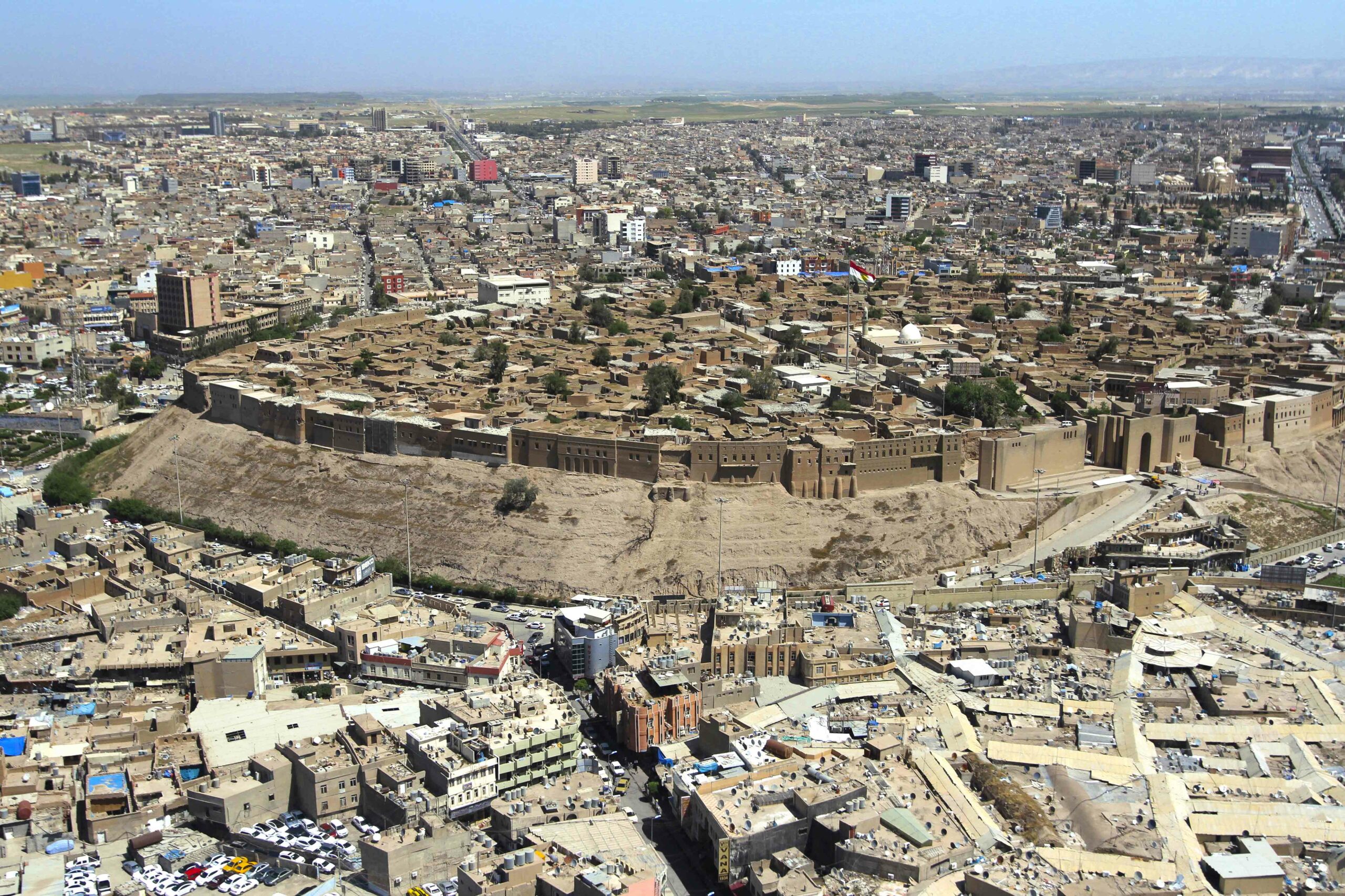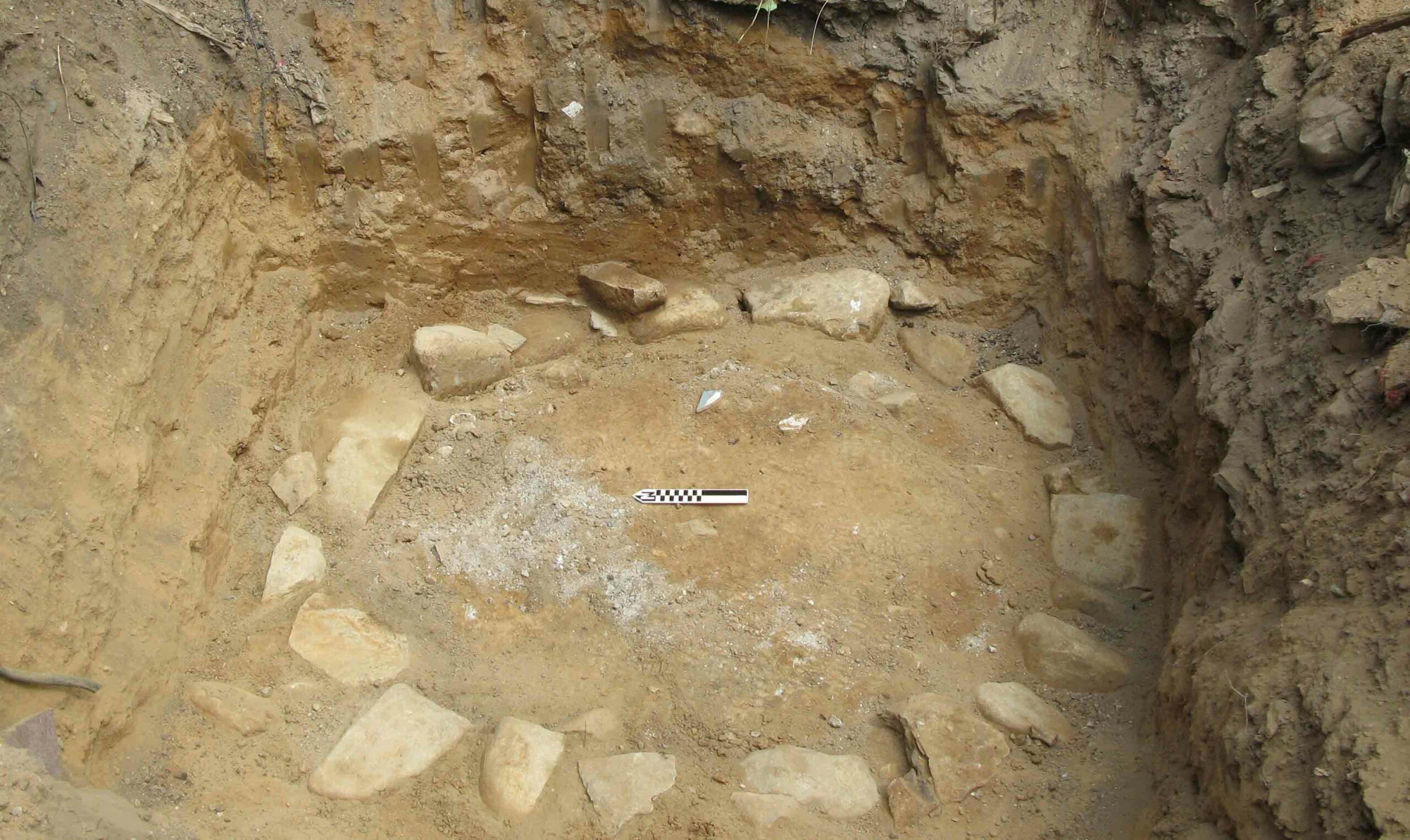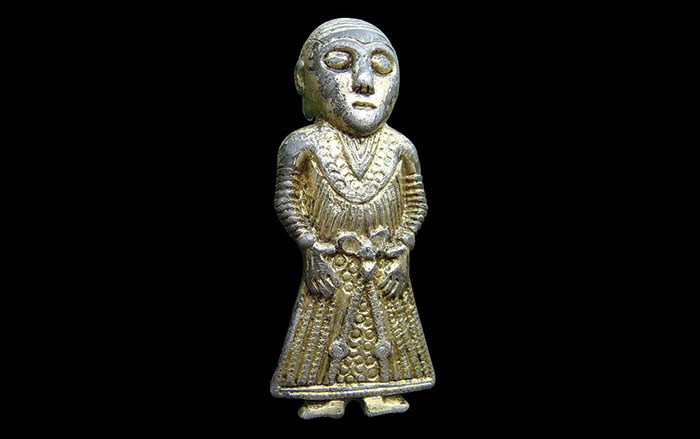
When local Chilean lumbermen noticed large animal bones on the eroding margins of a creek, they had no idea that they had stumbled onto one of the oldest known examples of human occupation in the Americas. Over a decade of primary excavations at Monte Verde, Vanderbilt University archaeologist Tom Dillehay, then at Austral University of Chile, found the remains of a year-round habitation on what thousands of years ago was an open sandbar, preserved under what had become a peat bog.
The evidence included a 60-foot-long structure, probably tentlike, that may have housed up to 30 people. Support posts within the construction could possibly have demarcated individual living areas. In front of the residence were the remains of two hearths. Nearby, among preserved meat and firewood, were three human footprints still visible in the hardened clay. Artifacts found in the area include wooden slabs (for grinding), the burned tip of a long lance, rudimentary pebble tools used for scraping and cutting, and biface fragments. Wood charcoal from the hearths, when tested, returned an average date of slightly more than 14,500 years ago.
Dillehay has continued to work at the site, showing that the people of Monte Verde were not just big-game hunters. They also appeared to have used 10 different species of seaweed from the Pacific coast—a little more than 50 miles west of the site—for both food and medicine.
In another section of the site, at a level below the spot where the tentlike living quarters sit, Dillehay found 26 stones. At least six appear to be man-made artifacts, and one has burn marks. There are also burned patches of ground, but he is hesitant to call these hearths. Dates returned from this evidence suggest that there may have been people at Monte Verde 15,000 years earlier than previously believed. But Dillehay himself says, “I don’t yet see any reason to believe people were in the Americas and that far south 30,000 years ago.”


